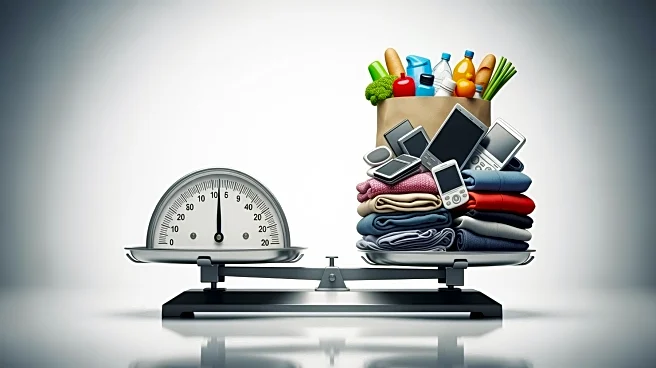What's Happening?
The U.S. job market is experiencing significant challenges, with the latest Bureau of Labor Statistics report indicating that most industries are either stagnant or shrinking. In August, only 22,000 jobs
were added, reflecting a cooling labor market. Federal Reserve Chair Jerome Powell has highlighted 'significant downside risks' in the labor market, while inflation remains above the Fed's 2% target. The ongoing government shutdown has delayed key public jobs data, further complicating the economic outlook. Additionally, 21 states and Washington D.C. are reportedly in a recession, prompting companies to halt hiring before considering layoffs. Despite these challenges, the healthcare and social assistance sectors have shown job growth.
Why It's Important?
The current state of the U.S. job market has broad implications for the economy and society. A stagnant or shrinking labor market can lead to increased unemployment, reduced consumer spending, and slower economic growth. The Federal Reserve's concerns about inflation and labor market risks suggest potential adjustments in monetary policy, which could affect interest rates and borrowing costs. The recession in multiple states highlights regional economic disparities and the need for targeted policy interventions. While some sectors like healthcare are growing, the overall economic uncertainty may impact business investments and consumer confidence.
What's Next?
As the government shutdown continues, the delay in public jobs data could hinder policymakers' ability to make informed decisions. The Federal Reserve may need to adjust its monetary policy to address inflation and labor market challenges. Businesses might adopt more cautious hiring practices, and workers may need to adapt to changing job market conditions. The healthcare sector's growth could present opportunities for job seekers, but broader economic recovery will depend on resolving the shutdown and addressing inflationary pressures.











